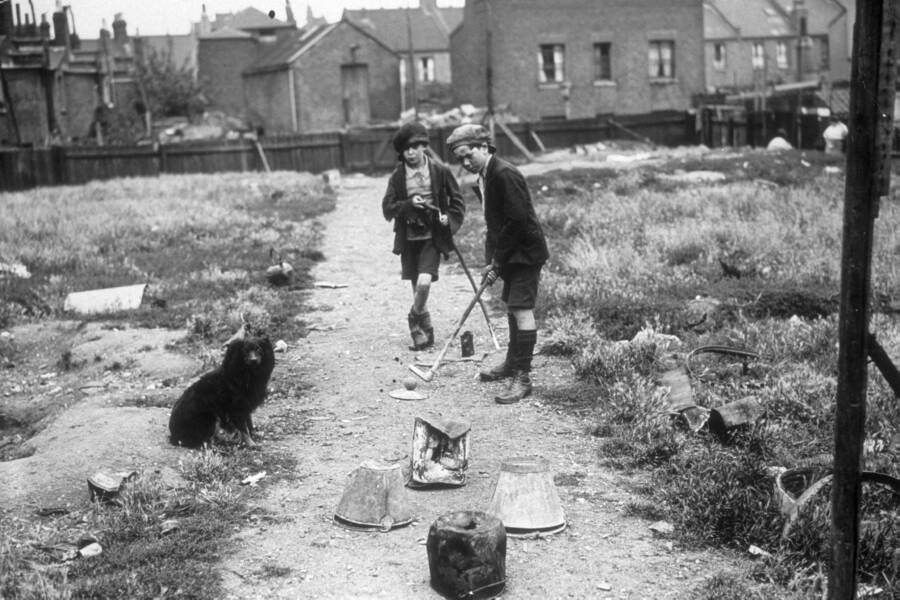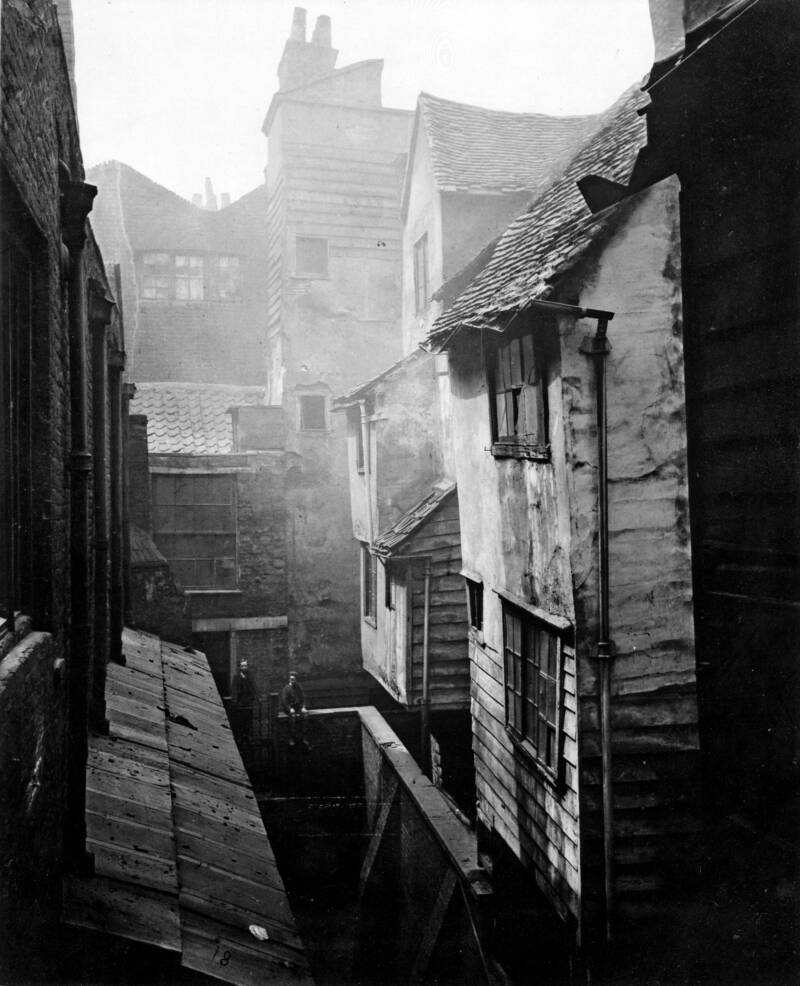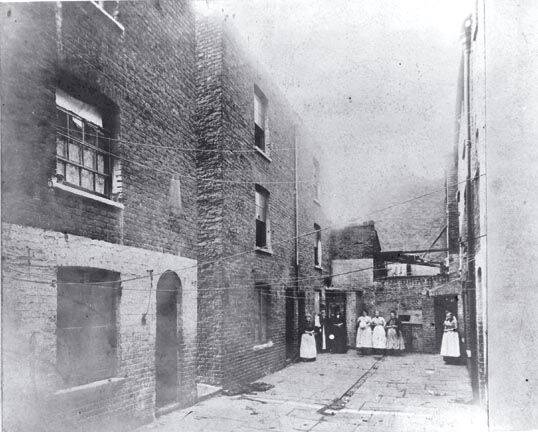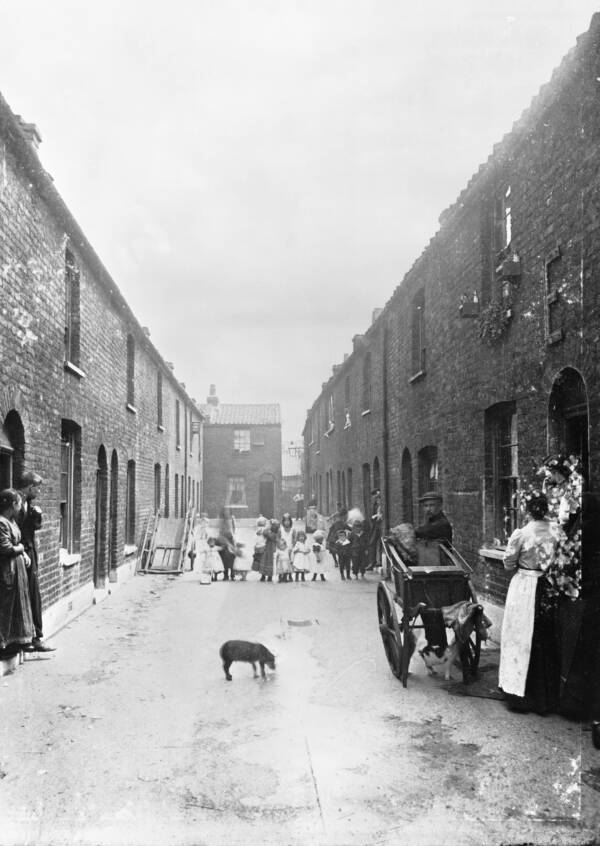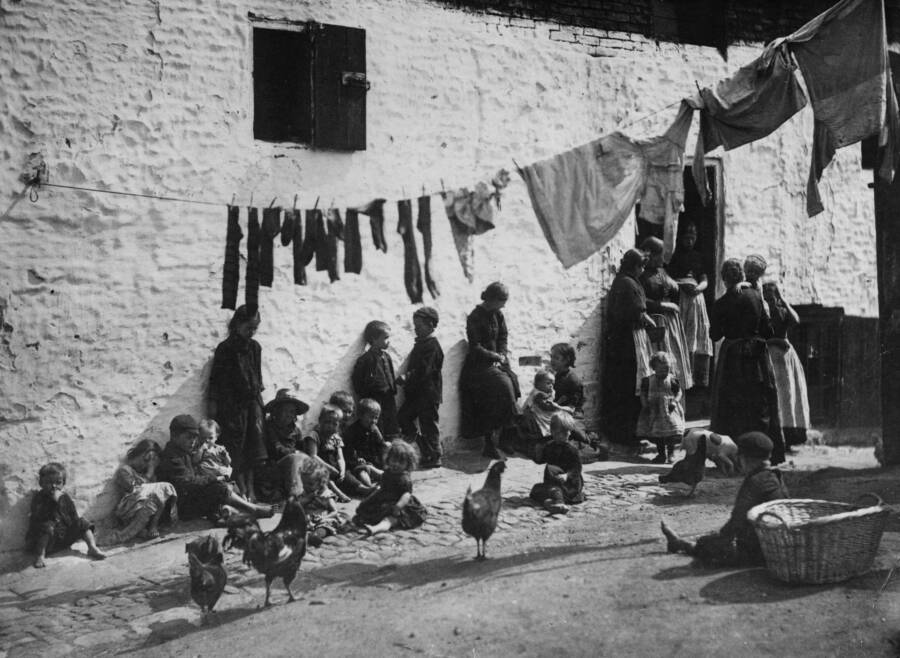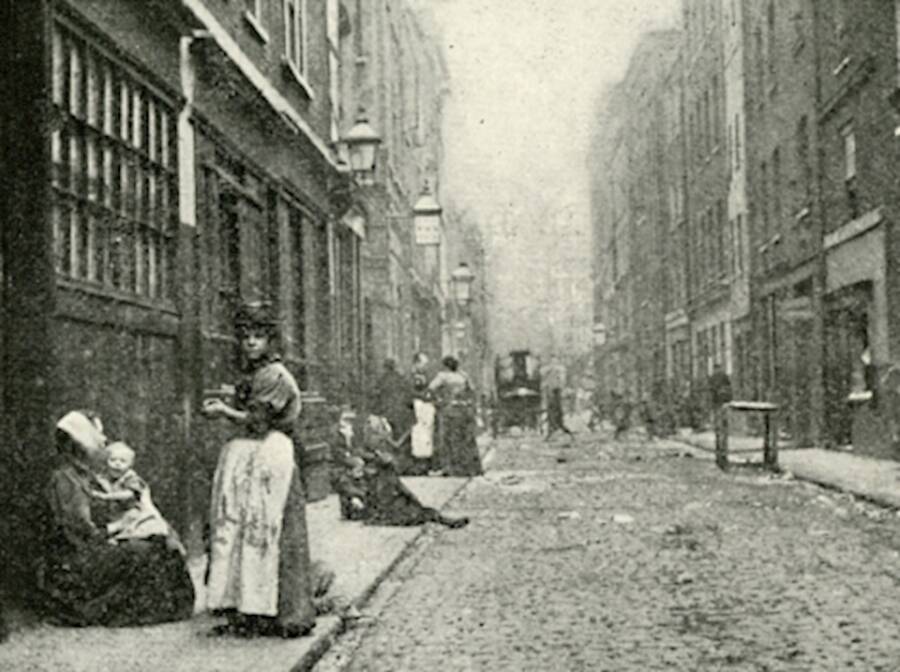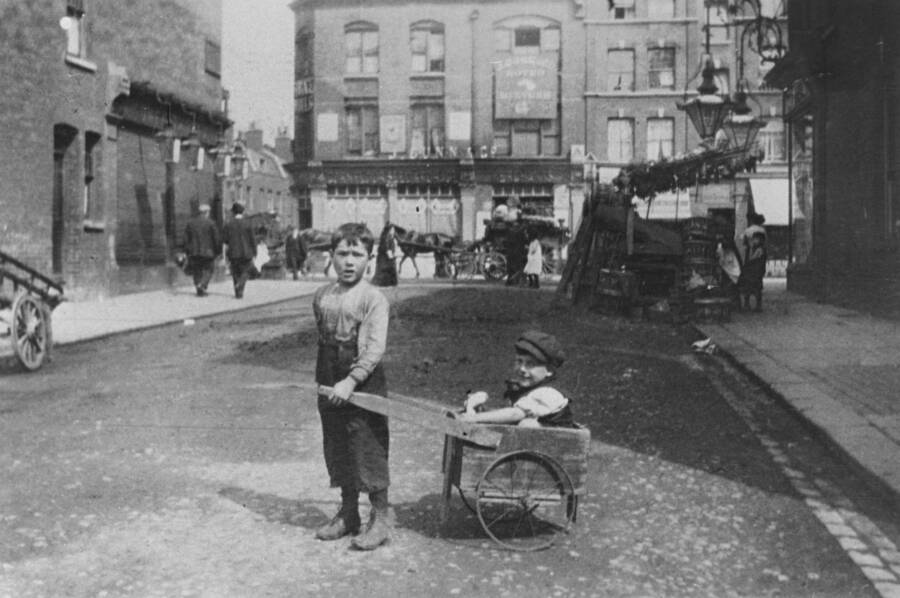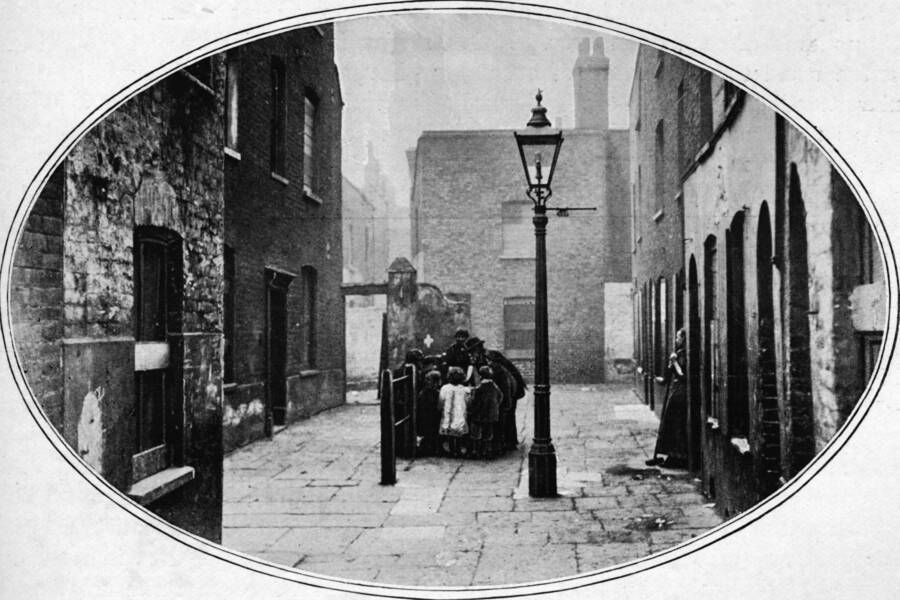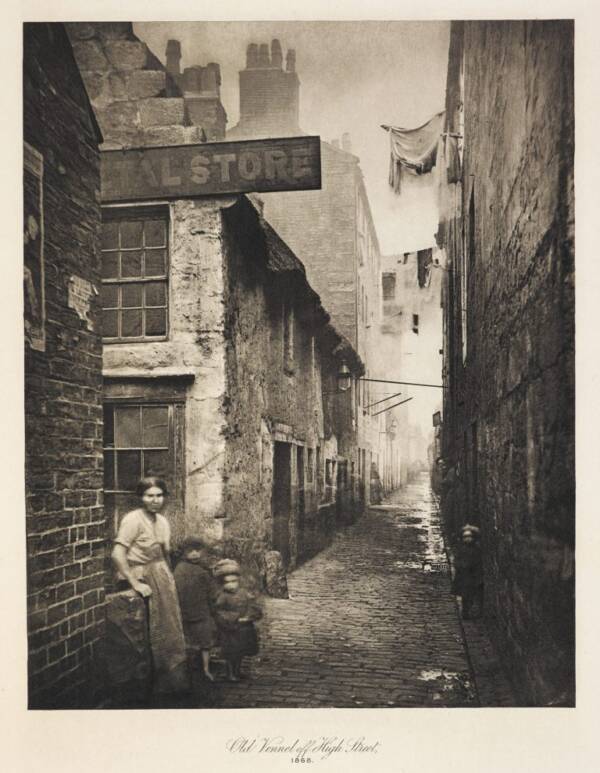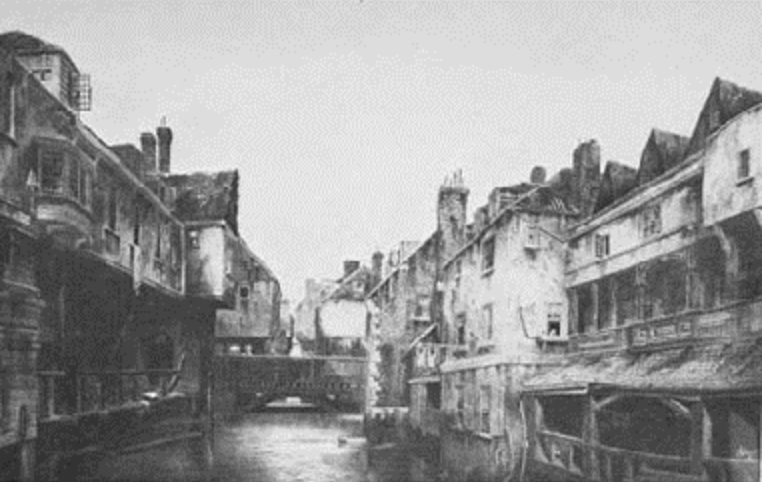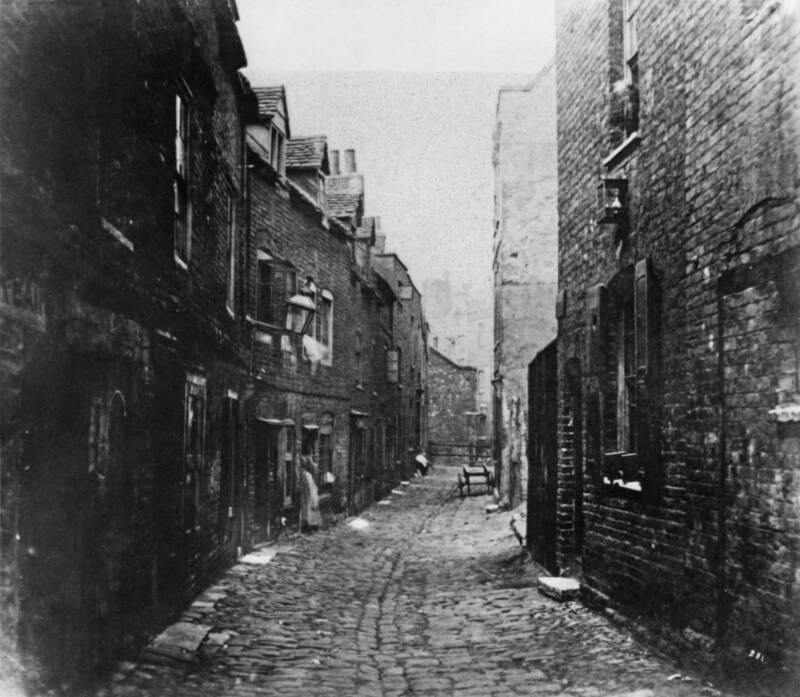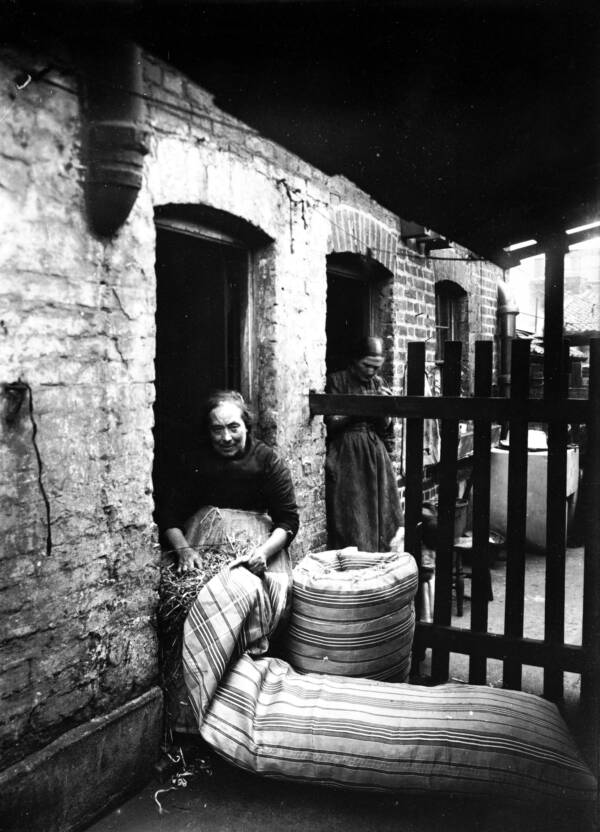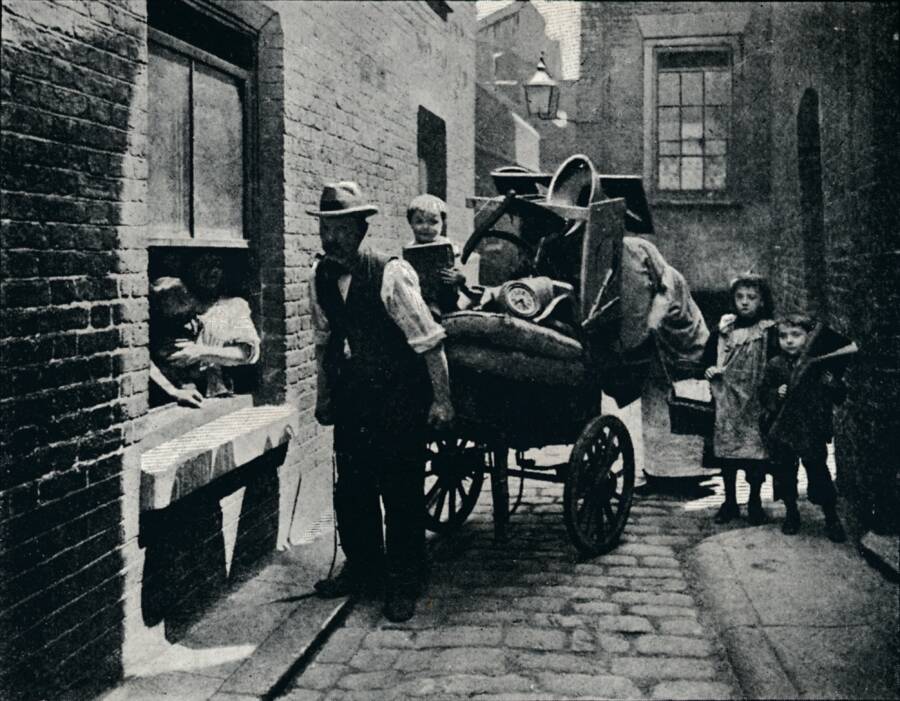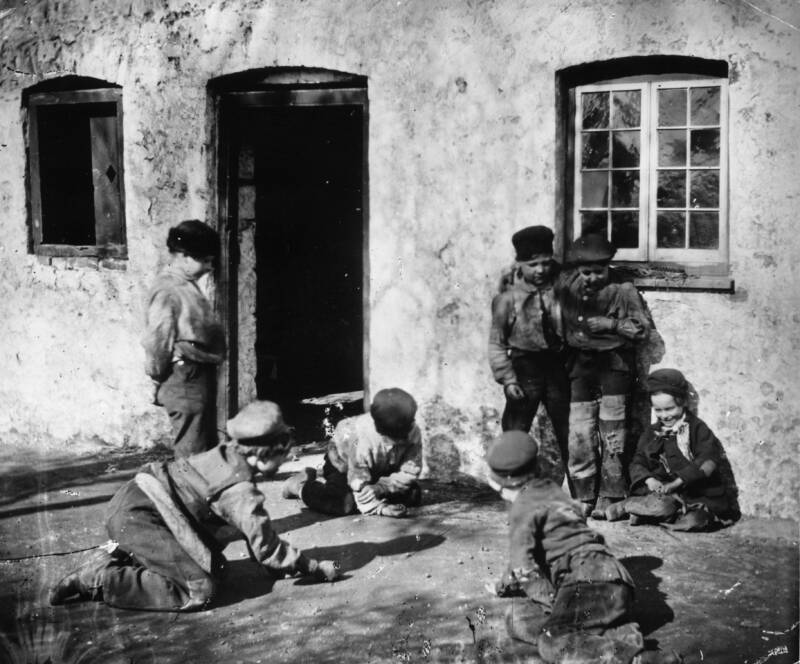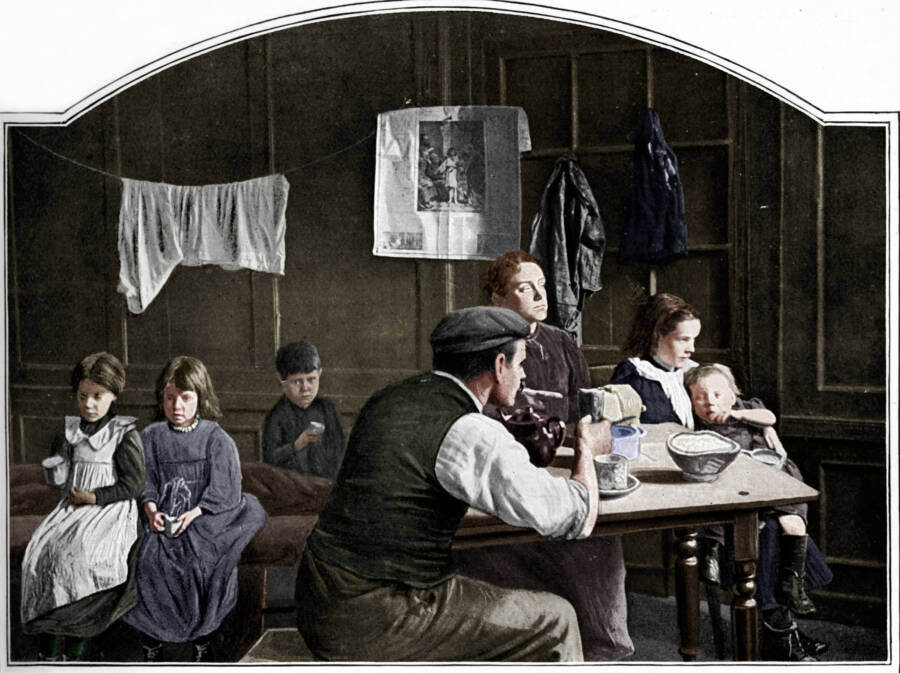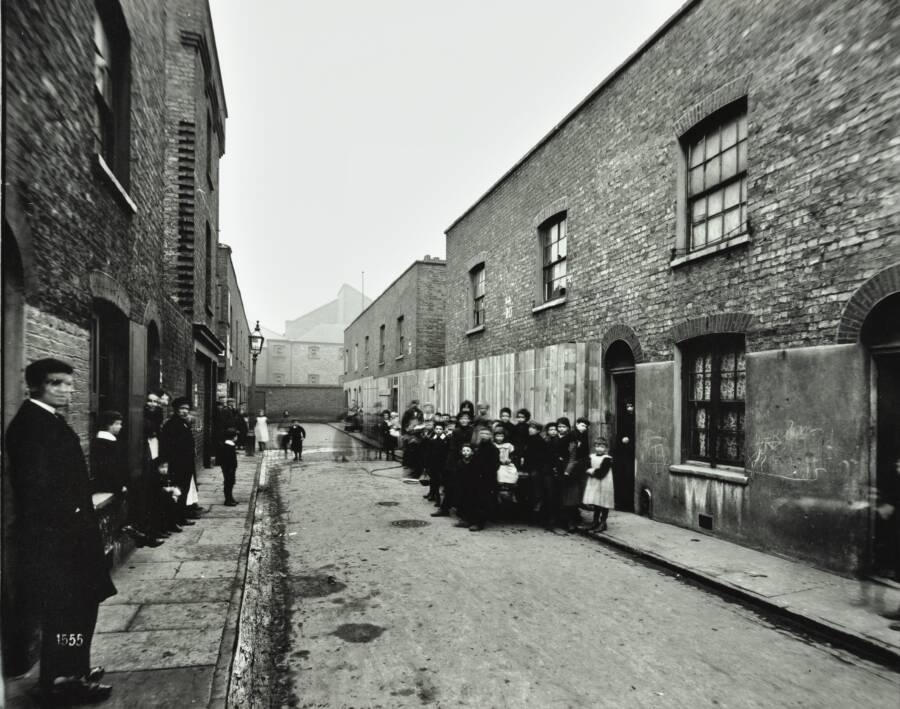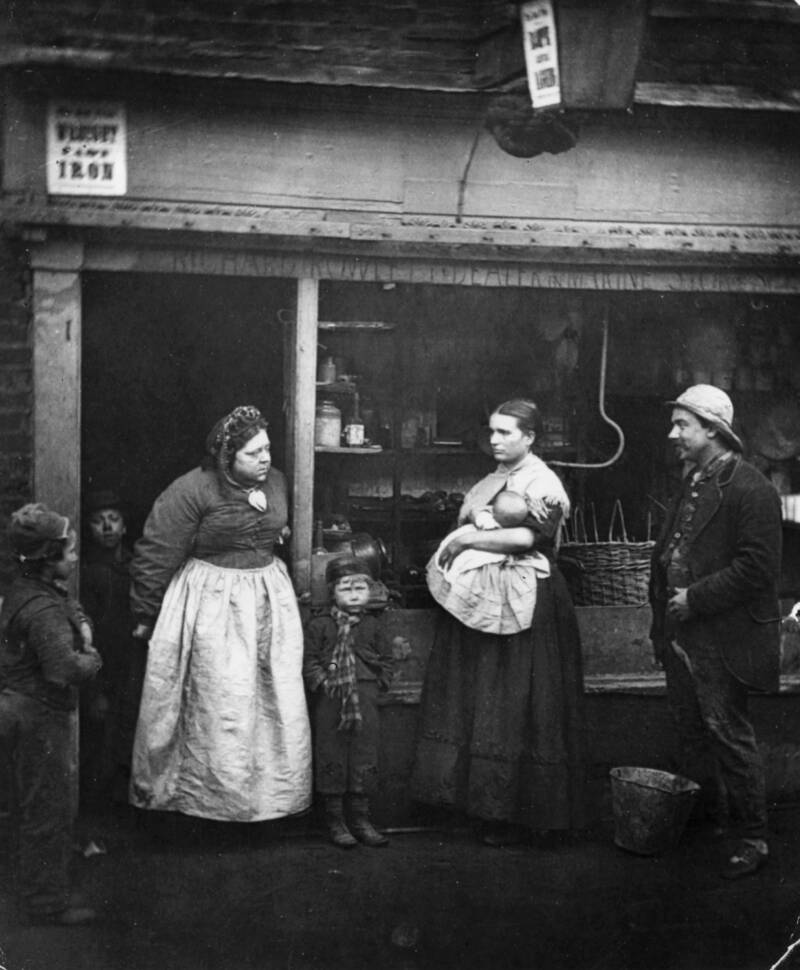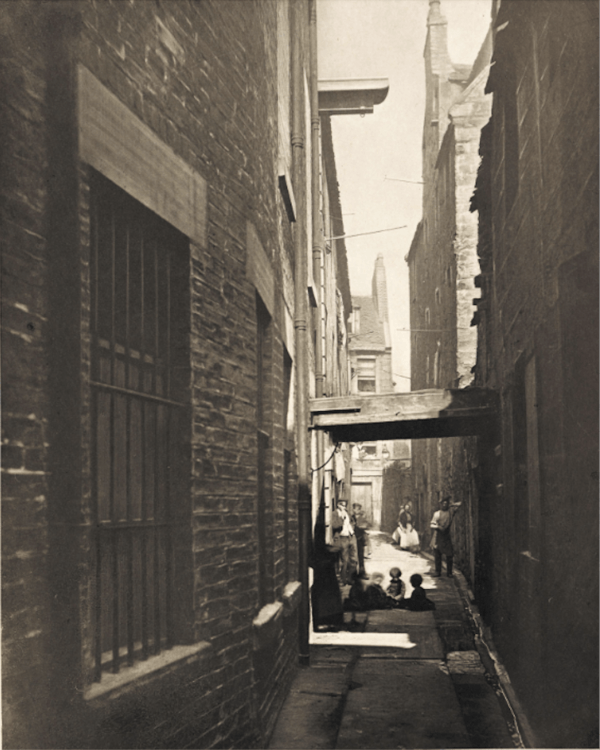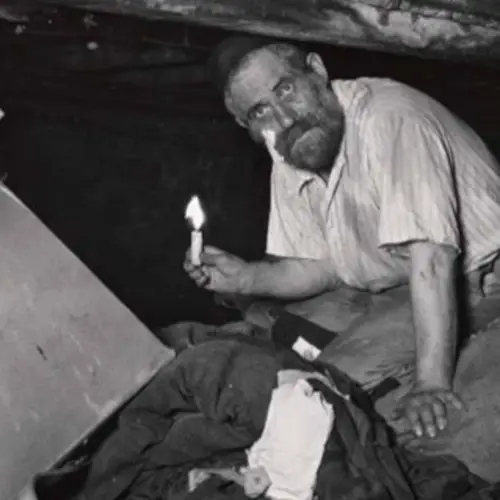Despite being one of the richest countries in the world, England was also home to some of the most destitute neighborhoods, with 35 percent of Londoners living in poverty at the end of the 19th century.
When social reformer Henry Mayhew visited the slums of Victorian London, he recoiled. “The water of the huge ditch in front of the houses is covered with a scum… and prismatic with grease,” Mayhew wrote. “Along the banks are heaps of indescribable filth… the air has literally the smell of a graveyard.”
Indeed, London’s slums had become a graveyard for many impoverished people who died from cholera or dangerous conditions in unregulated factories. And sometimes, the slums collapsed, killing everyone inside.
Yet, Victorian London was one of the richest cities in the world, making these neighborhoods even starker and more disturbing. Walk the streets of London’s slums in 27 haunting photographs below.
Life In London's Victorian Slums
The London slums were never built to last. Between 1800 and 1850, England's total population doubled, forcing people out of rural areas and into Britain's largest city, London.
The shift left the city desperate for housing. And businessmen stepped in to meet that need – while extracting a profit from London's poorest residents.
Landlords threw up shaky tenements on marshy land there for cheap, and because of city regulations, businessmen could only lease said land for 21 years. The homes were consequently shoddy and collapses claimed the lives of many residents.

Gustave Dore/Wellcome LibraryIn 1872, the artist Gustave Dore created an engraving of London's slums.
The homes flooded when it rained and paper-thin walls barely kept out the cold in winter. Londoners who could not afford rent could instead purchase a night sleeping in coffins lined up in empty warehouses — for the low price of four pennies.
As one architect remarked in 1859, "It seemed scarcely possible that human beings could live. The floors were in holes, the stairs broken down, and the plastering had fallen."
Well-off Londoners derided their neighbors as sinful and lazy, drunkards and thieves. In reality, Londoners who lived in the slums worked hard to survive.
Children in the slums searched for jobs at seven years old. Boys shoveled horse dung or swept chimneys. They also shined shoes. At 13, girls might take a job at a match factory, working 14 hours a day. Others chose sex work.
The suicide rate in the Victorian slums was so high that fishing bodies out of the Thames was a full-time job.
Stigmatizing The Slums

Jason C. McDonald/Wikimedia CommonsThe Old Nichols slums were torn down in the early 20th century, but modern London still shows hints of the past.
A desperate place, the Victorian slums were nonetheless seen by the wealthy as the responsibility of the poor. As one magistrate claimed, the slums were a hub of "squalor, drunkenness, improvidence, lawlessness, immorality and crime."
The slums constantly appeared in the newspapers, too, piquing the curiosity of wealthy families who made disturbing trips there to ogle for themselves.
In the 1890s, the daughter of a wealthy family decided to visit London's slums, wondering if they were truly as terrible as the papers made them sound. When the girl later vanished in the slums, it became front-page news.
Detectives combed through the poorest corners of London until they found her being held for ransom. During her visit, the girl had apparently bragged about her wealthy parents, which led to her kidnapping by a couple of residents hoping for a reward.
But the newspapers also notoriously exaggerated the condition of the slums.
Another man, Thomas Trollope, claimed to have visited the Clerkenwell slums at the age of eight after hearing about the "wickedness" there. Yet to his surprise, Clerkenwell was peaceful.
The wickedness of the Victorian slums had nothing to do with the people, Trollope decided – the slums were wicked because of the conditions the poor faced.
How Reform Changed The Shape Of The City
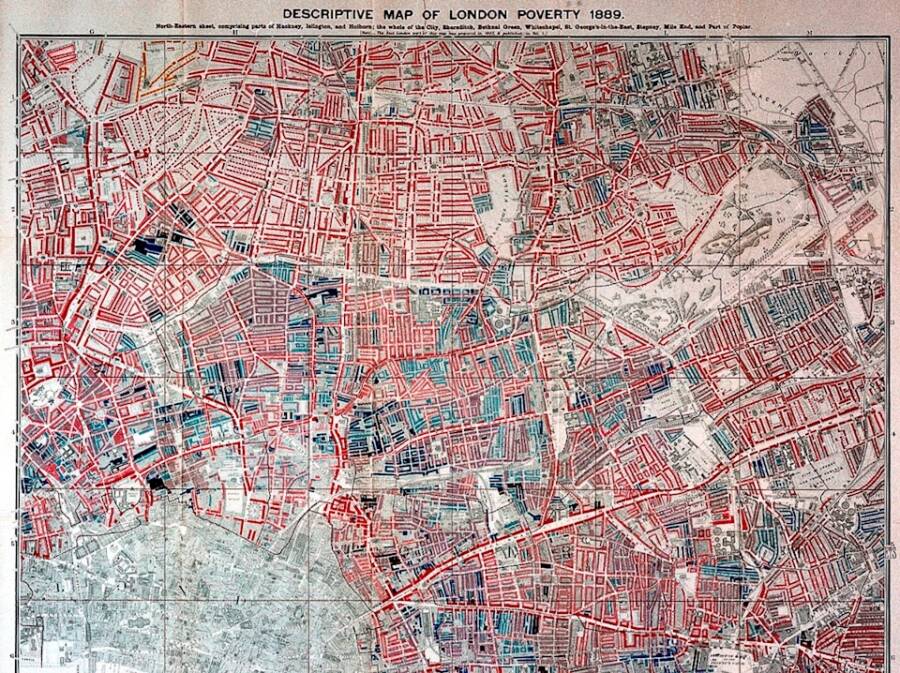
Wellcome LibraryCharles Booth created a poverty map of London in 1889. The darker colors represent slums.
With such horrific conditions, it's not surprising that cholera and other infectious diseases plagued the slums. And because the slums were associated with disease and crime, well-off Londoners advocated for simply tearing them down.
But at first, slum clearances made the problem worse. In the 1850s and 1860s, the city cleared slums to build railroad tracks. In one decade, 56,000 renters lost their homes – while the landlords received compensation for the loss of property.
Slum removal without a plan for displaced residents did not solve the problem.
By the end of the 19th century, social campaigns helped improve conditions for London's poor. Sanitation plants eliminated the raw sewage that caused cholera outbreaks, and new schools taught impoverished children.
Charles Booth, a social reformer, brought attention to the problem with his poverty map, which highlighted London's poorest streets. Philanthropists funded building and education projects aimed at helping the impoverished. But for many, help came too late.
Victorian London was one of the richest cities in the world, as colorized photos of 19th-century London show. But poverty was a fact of life in many turn-of-the-century cities, including New York. Next, take a look inside New York tenements.

